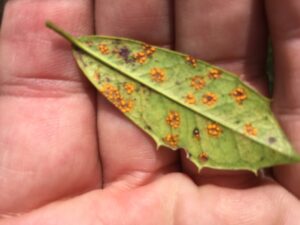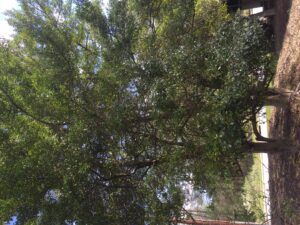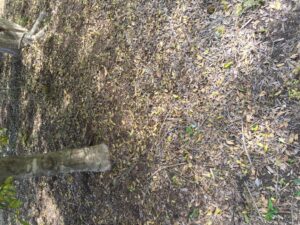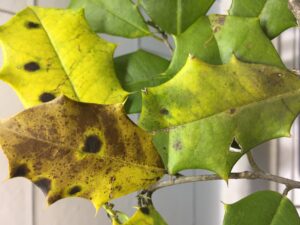Pest Alert – American Holly Rust
go.ncsu.edu/readext?792124
en Español / em Português
El inglés es el idioma de control de esta página. En la medida en que haya algún conflicto entre la traducción al inglés y la traducción, el inglés prevalece.
Al hacer clic en el enlace de traducción se activa un servicio de traducción gratuito para convertir la página al español. Al igual que con cualquier traducción por Internet, la conversión no es sensible al contexto y puede que no traduzca el texto en su significado original. NC State Extension no garantiza la exactitud del texto traducido. Por favor, tenga en cuenta que algunas aplicaciones y/o servicios pueden no funcionar como se espera cuando se traducen.
Português
Inglês é o idioma de controle desta página. Na medida que haja algum conflito entre o texto original em Inglês e a tradução, o Inglês prevalece.
Ao clicar no link de tradução, um serviço gratuito de tradução será ativado para converter a página para o Português. Como em qualquer tradução pela internet, a conversão não é sensivel ao contexto e pode não ocorrer a tradução para o significado orginal. O serviço de Extensão da Carolina do Norte (NC State Extension) não garante a exatidão do texto traduzido. Por favor, observe que algumas funções ou serviços podem não funcionar como esperado após a tradução.
English
English is the controlling language of this page. To the extent there is any conflict between the English text and the translation, English controls.
Clicking on the translation link activates a free translation service to convert the page to Spanish. As with any Internet translation, the conversion is not context-sensitive and may not translate the text to its original meaning. NC State Extension does not guarantee the accuracy of the translated text. Please note that some applications and/or services may not function as expected when translated.
Collapse ▲ American hollies and its hybrids such as ‘Fosters’ holly are susceptible to an interesting fungal disease locally. This fungal leaf infection occurs on the underside of the leaf. These spots erupt in yellow spores in the spring of the year. Sometimes American hollies will cast off these older infected leaves in favor of the new emerging leaves.
American hollies and its hybrids such as ‘Fosters’ holly are susceptible to an interesting fungal disease locally. This fungal leaf infection occurs on the underside of the leaf. These spots erupt in yellow spores in the spring of the year. Sometimes American hollies will cast off these older infected leaves in favor of the new emerging leaves.
The thick evergreen leaves of American holly and its hybrids, remain on the plant until the spring of the third year. These old leaves are hosts to many annual foliage diseases and insects. Few of these pests threaten the health of American hollies. However, these may reduce the aesthetic and commercial value of the foliage.
Diseases that attack American holly and its hybrids include 14 species of leaf spot fungi, six species of black mildews, two powdery mildews, and one rust. The most common and widespread of the leafspots are caused by the fungi Cercospora pulvinula, Phacidium curtissii, Phyllosticta opaca, and Physalospora ilicis. The rust Chrysomyxa ilicina is known only from the southern Appalachian area.
It is this rust fungus that is prevalent in the spring. Combined with
Spring Evergreen Leaf Drop , American hollies can look pretty ragged in some springs. Should gardeners and landscapers treat these plants? No, the rust disease does not harm the plant. Usually the plant recovers in a few weeks, putting on new leaves.









